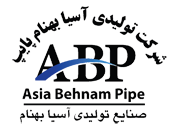Get a quote now
0777288510
History of Polyethylene

Polyethylene was first synthesized by the German chemist Hans von Pechmann, who prepared it by accident in 1898 while investigating diazomethane.[7][8] When his colleagues Eugen Bamberger and Friedrich Tschirner characterized the white, waxy substance that he had created, they recognized that it contained long –CH2– chains and termed it polymethylene.[9]
A pill box presented to a technician at ICI in 1936 made from the first pound of polyethylene
The first industrially practical polyethylene synthesis (diazomethane is a notoriously unstable substance that is generally avoided in industrial application) was discovered in 1933 by Eric Fawcett and Reginald Gibson, again by accident, at the Imperial Chemical Industries (ICI) works in Northwich, England.[10] Upon applying extremely high pressure (several hundred atmospheres) to a mixture of ethylene and benzaldehyde they again produced a white, waxy material. Because the reaction had been initiated by trace oxygen contamination in their apparatus, the experiment was, at first, difficult to reproduce. It was not until 1935 that another ICI chemist, Michael Perrin, developed this accident into a reproducible high-pressure synthesis for polyethylene that became the basis for industrial low-density polyethylene (LDPE) production beginning in 1939. Because polyethylene was found to have very low-loss properties at very high frequency radio waves, commercial distribution in Britain was suspended on the outbreak of World War II, secrecy imposed, and the new process was used to produce insulation for UHF and SHF coaxial cables of radar sets. During World War II, further research was done on the ICI process and in 1944 Bakelite Corporation at Sabine, Texas, and Du Pont at Charleston, West Virginia, began large-scale commercial production under license from ICI.[11]
The breakthrough landmark in the commercial production of polyethylene began with the development of catalyst that promoted the polymerization at mild temperatures and pressures. The first of these was a chromium trioxide–based catalyst discovered in 1951 by Robert Banks and J. Paul Hogan at Phillips Petroleum.[12] In 1953 the German chemist Karl Ziegler developed a catalytic system based on titanium halides and organoaluminium compounds that worked at even milder conditions than the Phillips catalyst. The Phillips catalyst is less expensive and easier to work with, however, and both methods are heavily used industrially. By the end of the 1950s both the Phillips- and Ziegler-type catalysts were being used for high-density polyethylene (HDPE) production. In the 1970s, the Ziegler system was improved by the incorporation of magnesium chloride. Catalytic systems based on soluble catalysts, the metallocenes, were reported in 1976 by Walter Kaminsky and Hansjörg Sinn. The Ziegler- and metallocene-based catalysts families have proven to be very flexible at copolymerizing ethylene with other olefins and have become the basis for the wide range of polyethylene resins available today, including very low density polyethylene and linear low-density polyethylene. Such resins, in the form of UHMWPE fibers, have (as of 2005) begun to replace aramids in many high-strength applications.
Lab-Tests
The laboratory measures: outside diameter, Ovality, thickness of curtain and continuous monitoring of physical surfaces of pipe during production.
This test is done in order to monitor reaction of pipes against stable hydrostatic pressures in a stable temperature. Every inflection indicates deficiency in pipes like: disruption, and any leakage.
In the test high pressure implement on the pipes, so that in 60 to 70 seconds will be burst. The type of disruption shows indicators like: quality of row materials, proper extruder temperatures and proper cooling of pipes after production, Best type of disruption in the test is timidity and distortion in canary beak.
In the test, a sample the pipes in particular length is heated in a period of time in a standard way. Difference between length before and after heating are calculated as percentage of variation of length based on primary length. The maximum variation is up to 3%.
In the test resistance of row/ primary materials against demolition because of oxidation with O2 is measured. The oxidation process should take more than 20 minutes time.
Leave a Message

Main Office: Poly Charkhi Industrail Park, Deh Sabz Street, Opposite Alokozay Group of Companies, Kabul, Afghanistan.
hafiz@asiabehnam.com
Info@asiabehnam.com
0777288510
0782303015
Info@asiabehnam.com
0777288510 0782303015